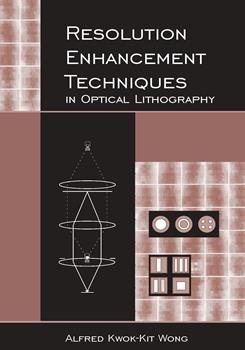|
In low k 1 imaging, high-spatial-frequency components of the mask spectrum carry a sizable fraction of the transmitted light energy. These components are not captured by the low-pass pupil. For example, only the first orders are used in the imaging of dense patterns with periods p Ì â¤1 under off-axis illumination. As a result, images are distorted from the original patterns because of the loss of these high-frequency components.
There are primarily four types of image shape distortion. They are illustrated in Fig. 4.1. Proximity effect refers to features with the same nominal critical dimension (CD) printing differently because of environmental variations. The most typical scenario is shown in Fig. 4.1 (a), which plots the printed dimension of a nominally d Ì =0.4 line as a function of pitch. As the pitch increases separation between adjacent lines widens; the imaged linewidth varies by as much as 15% as spacing changes. This type of distortion results in increased across-chip linewidth variation (ACLV).
Image distortion also manifests itself as nonlinearity. As opposed to proximity effect, which describes variation of the same nominal CD with environment, nonlinearity refers to changes of the nominal CD not reflected linearly in the printed image. Figure 4.1(b) shows the simulated linewidth as a function of the effective mask size. For large dimensions, a unit change in nominal dimension results in a unit change in the printed dimension, but nonlinearity becomes an increasing concern as the CD decreases. In addition to increased linewidth variation, nonlinearity can also lead to nonprinting of critical features.
|


